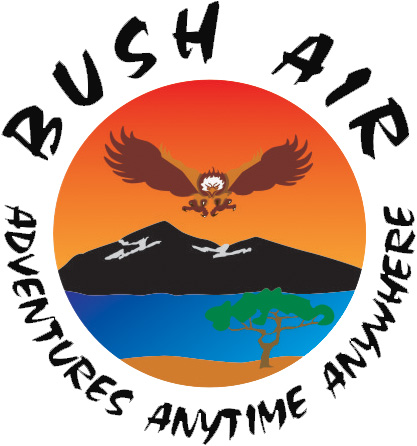
 |
|
Introduction to Bush Flying, Bush Pilots & Bush Planes (Extracted from CC Pocock's book- "Bush & Mountain Flying"). Most people do not know the real meaning of the terms "Bush Pilot" or "Bush Flying" and too many pilots believe that they are "bush pilots" just because they have flown around some remote "bush" environments and landed on some dirt and grass strips. A bush pilot is not someone who simply flys an airplane in a "bush" environment or who can land on prepared dirt or grass strips. Just because you fly into strips at game farms, ranches and lodges or over remote and unpopulated areas does not necessarily make you a bush pilot! There is a LOT more to bush flying than you think! A bush pilot is a person who is able to fly a light to medium size aircraft safely in and out of places that would normally be regarded by most other pilots as "marginal", "too dangerous" or "impossible". Generally these are areas that are inaccessible to most aircraft and other means of transportation. Furthermore, a bush pilot should be able to maintain and repair the aircraft and survive in the bush. |
|
Bush flying is a term for aircraft operations carried out in remote and inhospitable regions of the world. Bush flying involves operations into unimproved and rough terrain, frequently necessitating bush planes be equipped with abnormally large tires, floats or skis. This type of flying, combined with unpredictable weather and distance from help, means that bush pilots have to be very resourceful to be successful, or all too frequently, just to stay alive. Bush flying originated in Alaska and Canada providing supplies to isolated communities and eventually spread further south to places like Africa, Australia and South America. Bush pilots must fend for themselves because they are so far from help. Critical skills range from survival skills to mechanical and electrical skills for airplane repair to hunting, trapping, shelter building and survival ("Jack of all trades"). |
|
The life and death nature of bush flying also means that bush pilots frequently resort to untested methods for accomplishing the job, the result is that many common practices are pioneered in bush flying. Bush pilots need to know how to deal with common engine, airframe, electrical and avionics problems that can, do and will occur from time to time, including important maintenance issues. When operating out in remote parts of the bush it may not be possible to get a qualified aircraft mechanic to assist you. During the Bush & Mountain Flying Course you will learn how the aircraft engine and electrical system works, as well as how to diagnose and fix some of the most common engine, electrical and avionics problems. A bush plane needs to be properly equipped for operating out in remote and rough areas. Such an aircraft should be fitted with strong landing gear and oversize high floatation tires and the pilot should always be ready for any eventuality and should be carrying all the necessary tools and survival gear. |
|
Taildraggers are generally preferred for bush flying, however, a tricycle gear airplane can go virtually anywhere a taildragger can, provided it's correctly loaded and equipped with the correct landing gear and the pilot is skilled in the correct techniques. A bush pilot should have a thorough knowledge of the hazards of bush and mountain flying and be skilled in the techniques required to safely fly in these areas. |
,Copyright (C) Milne "CC" Pocock -Bush Air -South Africa and USA. All Rights Reserved.